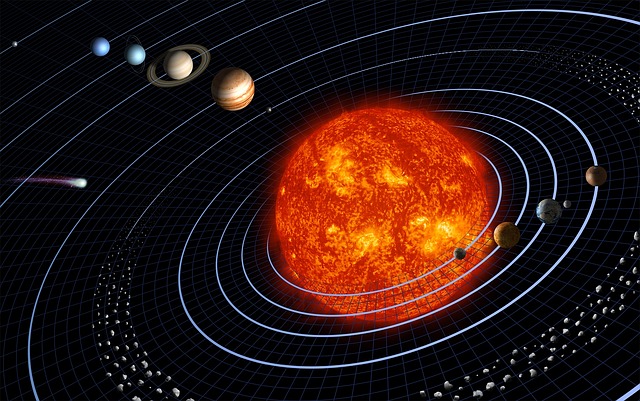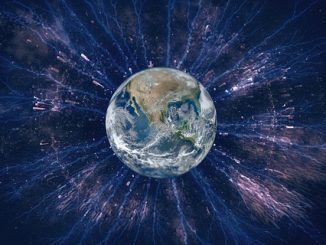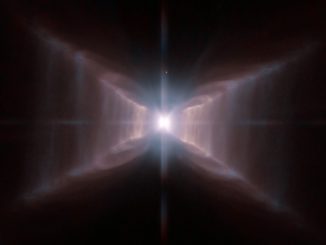
A team of international astrophysicists, led by Laurent Gizon, director of the Max Planck Institute for Solar System Research and co-author of a new paper published in the journal Nature, has unequivocally established that “Rossby waves”, or giant planetary waves that on Earth are generated in several places like the oceans, the atmosphere and the outer core, indeed, are present on the Sun, and are very similar to those that control the weather here on Earth.
The existence of Rossby waves, also known as “r modes”, on the Sun has been heavily hypothesized among experts for several decades now. However, observing these waves, which although gigantic in size, possess small amplitude that makes them hard to detect, has proven extremely difficult.
The reason why the team of astrophysicists from the Center for Space Science at NYU Abu Dhabi, the Max Planck Institute, and Stanford University has been able to detect them now is thanks to recent technological advancements that made detections possible, and scientists trained to sift through massive observation data. In fact, Gizon’s team examined six years’ worth of observation data that was collected by the Heliospheric and Magnetic Imager (HMI) instrument on board NASA’s Solar Dynamics Observatory.
The results of the team’s examination, which besides requiring high-precision observations of the Sun over many months and the involvement of photospheric granules – small convective cells roughly 1,500 kilometers (994 miles) in size on the solar surface – revealed that r modes are gigantic in size like their Earth counterpart.
“The HMI images have sufficiently high spatial resolution to allow us to follow the movement of photospheric granules on the Sun’s visible surface,” said Bjoern Loeptien, a scientist and first author of the paper.
Helioseismology, the study of wave propagation in the Sun, was used to verify the findings and observe the Sun’s Rossby waves at depths up to 20,000 km below the surface of the Sun. It was also observed that the waves have wavelengths similar to the span of the solar radius.
“The results from helioseismology and granulation tracking are in excellent agreement,” Gizon said.
“We don’t yet know what role Rossby waves play in the Sun, but know that they can’t be ignored in future studies,” noted Katepalli R. Sreenivasan, NYUAD Center for Space Science principal investigator, “their presence may help us understand solar convection at the largest spatial scales, which remains poorly understood. They are very hard to find because of low signal levels but this research team has used ingenious data processing techniques to discover their existence.”
The team’s findings have been published in the journal Nature Astronomy.
Reference: Sciencealert
Disclaimer: This page contains affiliate links. If you choose to make a purchase after clicking a link, we may receive a commission at no additional cost to you. Thank you for your support!




Leave a Reply